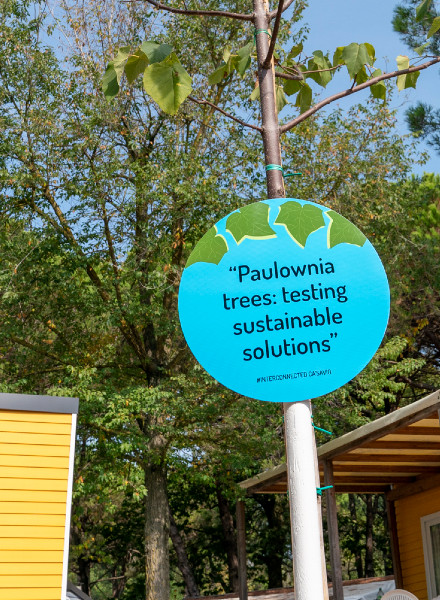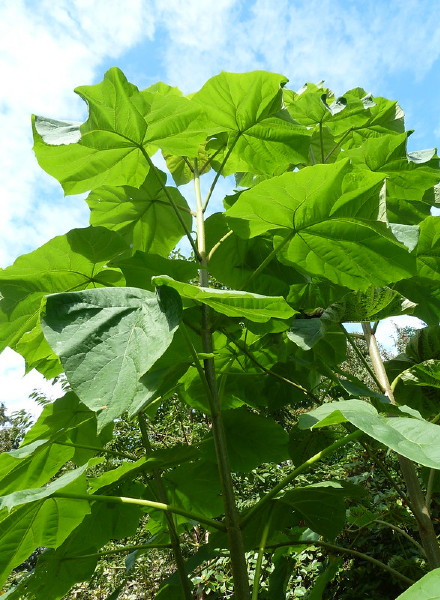Paulownia trees
Testing sustainable solutions
How fast do you think the trees in front of you grow to provide shade in a changing, hotter climate? Paulownia (Paulowniaceae) is one of the world’s fastest growing trees with about 1.5cm growth per day, or 2-3m in one season. Originally introduced from Asia to Europe in the 17th century, the tree provides fast shading and allows for secondary growth below its protecting leaves, such as for blueberries or vegetables. The fast tree growth with its super lightweight yet stable and flexible wood make it an ideal material for renewable composite materials. Such composite materials have a wood core sandwiched by fiber belts, such as from hemp, and can be used in skis, surfboards, orthopedic splines, furniture, or electric car chassis. Renewable composites are important stepping stones towards more sustainable engineering solutions.
Our partner Monviso Institute experiments with Paulownia trees on their test plantation on 1500m elevation in the Western Alps, to understand their growth rates, resilience to frost, snow and hail, and to storms. Paulownia grows fast and needs no fertilizer or pesticides. Through its fast growth, it stores high amounts of climate relevant CO2 in its wood. It could well become an interesting economic “crop” for mountain regions, in addition to its successful scaled growth in lowlands. Used together with locally grown flax or industrial hemp, Paulownia has a huge potential within interconnected sustainability transition processes.
Here you can find more information on Paulownia trees.


